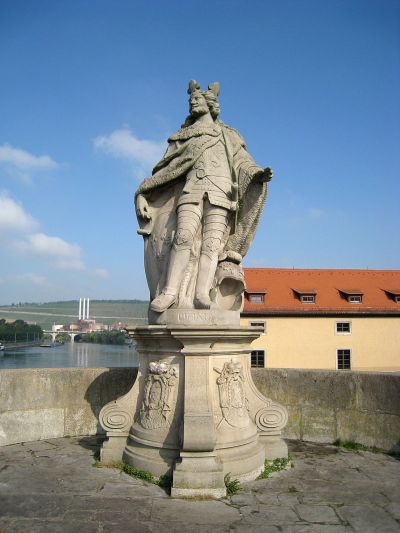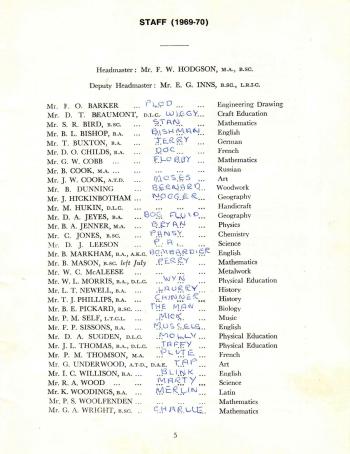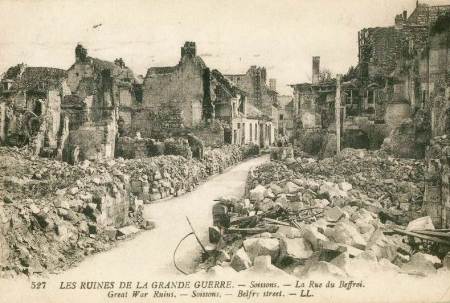It was too early to book into our holiday accommodation which was only just a few miles away so after a surprisingly good IBIS Hotel breakfast we set out to explore the town of Soissons.
The place was unusually quiet for a Monday morning and many of the shops in the town centre were closed (maybe it was a public holiday or perhaps they just don’t open on a Monday) but we didn’t let that bother us, we hadn’t come for the shops but rather to do some sightseeing.
It is a peaceful town today but it has had rather a turbulent past and on account of its strategic location was once a much more important place than it is today.
I was amused by a passage in a guide book which read – “The election of Pepin the Short took place in Soissons in the 8th century and in 923, following a battle outside the town walls, Charles the Simple gave up his throne in favour of the House of France”
I mention this because if I had been a King at around this time I would have taken great offence to names like these and would have preferred something like Andrew the Brave or Andrew the Wise, something altogether a little more flattering.
This is Pepin the Short…

Although in fairness rather like the unfortunate Pepin I wouldn’t have been able to effectively dispute the title Andrew the Short.
A quick look at Royal history reveals that the French had a habit of giving their monarchs uncomplimentary appendages, Louis II was the Stammerer, Louis V was called the Do Nothing, and Louis VI was known as the Fat!
My research throws up what simply has to be my all-time favourite – sometime in the late thirteenth century, Ivailo of Bulgaria was called the Cabbage! Rather like the England Football Manager Graham Taylor (1990-93) who was unflatteringly branded Turnip Taylor after a run of disappointing results and failure to qualify for the Football World Cup Finals.

I couldn’t help wondering if they were aware of these nicknames or if they were like school teachers who were all given names behind their backs by the students. Come to think about it now however, although we always thought that they were secret I am inclined to believe that each and every one of them knew exactly what we called them.
We used to have a geography teacher called Nogger Hickinbotham, a woodwork teacher called Plod Barker, an art teacher called Tap Underwood and a French teacher called Pluto Thompson but I am afraid that I am completely unable to explain the origin of any of those ridiculous names.
In the first year at Dunsmore School for Boys in Rugby my younger brother Richard helpfully recorded all of these names for posterity in the 1969/70 school Year Book…


Back now to Soissons.
During the Hundred Years’ War, French forces committed a notorious massacre of English archers stationed at the town’s garrison in which many of the French townsfolk were themselves murdered. The massacre of French citizens by French soldiers shocked Europe and Henry V of England, noting that the town of Soissons was dedicated to the Saints Crispin and Crispinian, claimed to avenge the honour of the Saints when he met the French forces at the Battle of Agincourt on St Crispin’s Day 1415.
The last big upheaval in the town was during the First-World-War (1914-18). In the German Spring offensive of 1918 Soissons fell into enemy hands but after massive bombardment by the French in July the town was recaptured. When I say town what I really mean is what was left of it after repeated attacks the centre including the Cathedral was almost totally destroyed and had to be almost completely rebuilt in the post war years.

During the battle the Allies suffered 107,000 casualties (95,000 French and 12,000 American), the Germans suffered 168,000 casualties and the French High Command justified the deaths and the destruction on the basis that Soissons was an important strategic town that protected invasion and occupation of Paris. More about this later…
An interesting fact about the Battle of the Soissonnais and of the Ourcq is that during the campaign Adolf Hitler, the future Führer of Nazi Germany was awarded the Iron Cross First Class at Soissons on August 4th 1918. More about him later…
Anyway we spent an enjoyable morning exploring the streets of Soissons, the Town Hall, the Cathedral (every French Town has a mighty Cathedral) and finally the ruins of the Abbaye de St-Jean-Des-Vignes. The Abbaye is a magnificent place even today but could have been even more magnificent but for the fact that in 1805 the Bishop of Soissons approved its demolition to provide building materials to repair the nearby Cathedral – there was no UNESCO World Heritage Committee to prevent this sort of thing in 1805.
We completed our walk and finished the morning with an ice cream at a pavement bakery and with the clock ticking towards check-in time we left and made our way the La Croix du Vieux Pont Campsite where we still a little bit early so we waited patiently for our lodge to become available and while the children swam in the swimming pool I acquainted myself with the poolside bar facilities.
Does anyone have a favourite memorable nickname?




I seem to remember that Monty Python had ‘Otto the Impotent’ but that’s not a real one, of course. If you actually google ‘Otto the Impotent’ you should see The Mammoth Book of Tasteless and Outrageous Lists. That has a list of the 12 best. In my experience kids nowadays don’t really have nicknames for teachers, other than name based ones like footballers have…Incy, Wrighty, Shilts and so on.
LikeLiked by 1 person
Kids of today have no imagination!
LikeLike
Branded the Simple does seem a little unforgiving, Andrew. Nothing like calling a spade a spade. I suppose with all those Louis’ they had to differentiate somehow. Happy Sunday! 🙂 🙂
LikeLiked by 1 person
And to you Jo. We are in Porto coming near to the end of our train travels through the cities of Portugal.
LikeLiked by 1 person
Definitely Andrew the Wise!
LikeLiked by 1 person
I could live with that. Currently in Porto coming close to the end of our train journey through the cities and towns of Portugal.
LikeLiked by 1 person
How wonderful . . . . . can’t wait to catch up on all your adventures.
LikeLiked by 1 person
Ah, Soissons….many years ago, the journey to Provence would involve a wiggle around Soissons and Dijon, before meeting the main road further south as there was no Autoroute straight down from Calais…. Thanks for the memory jog, Andrew!
LikeLiked by 1 person
A delightful little place as most provincial French towns are. I liked it.
LikeLiked by 1 person
It does make one wonder if a nickname has to be agreed upon or as you suggest and behind the back kind of branding. It seems we have developed a variety of such names over the past years…Sue the crazy seeming to be quite popular. 🙂
LikeLiked by 1 person
It would surely have to be Sue the Fearless.
LikeLiked by 1 person
You my friend are very kind.
LikeLike
“the French High Command justified the deaths and the destruction on the basis that Soissons was an important strategic town that protected invasion and occupation of Paris.” When I read something like this, Andrew, I can’t help but think that the French High Command should have been out there leading the troops.
Is that a hairdo on top of Andrew the Short’s head? If so, maybe its purpose was to make him look taller!
Great history, Andrew. –Curt
LikeLiked by 1 person
Possibly Curt, when you are short it is a good idea to get a big hat. A top hat always worked for Toulouse Lautrec.
LikeLike
Good idea. That and thick soled shoes! Or if you are an A-List actor like the very short Arnold Schwarzenegger, you can insist that the photographers always make you appear taller.
LikeLiked by 1 person
I read once that Alan Ladd always stood on a box or other actors had to stand in a trench beside him. No matter, Shane is still one of my most favourite films.
LikeLike
Agreed on Shane, Andrew, a true classic that I haven’t seen in a long, long time. –Curt
LikeLiked by 1 person
Reblogged this on clawingmywayin.
LikeLiked by 1 person
House master at Ballarat College.Mr W.C. Lowe was known as Lav Low.
and the Deputy Mr Meene was called “Stingy”
LikeLiked by 1 person
Two good ones!
LikeLike
I enjoyed the history run-down, stuff I didn’t know so twice as enjoyable. Thanls
LikeLiked by 1 person
Thanks, a bit of history always spices up a post!
LikeLike
Pingback: A to Z of Statues – U is for King Umberto I of Italy | Have Bag, Will Travel
Monty Python invented “Otto the Impotent” but that’s not a real person. “Manuel the Sausage Maker” is though. The place to go to find that, and “Ivar the Boneless” is
https://en.wikipedia.org/wiki/List_of_nicknames_of_European_royalty_and_nobility:_I
LikeLike
Thanks for the link.
LikeLike
Andrew the Adventurous? Good to see your (presumably) bog-standard Grammar school offering Russian (No nickname for the teacher?). Times have changed …
LikeLike
I imagine that it would be quite distressing for a teacher not to have a nickname. I am willing to guess that he was called Cookie.
LikeLiked by 1 person
😉
LikeLike
My brother had a friend called ‘Gob’ because he could put his whole fist into his mouth. My brother was called ‘Stumpy’.
LikeLike
Two very unfortunate nicknames.
LikeLiked by 1 person